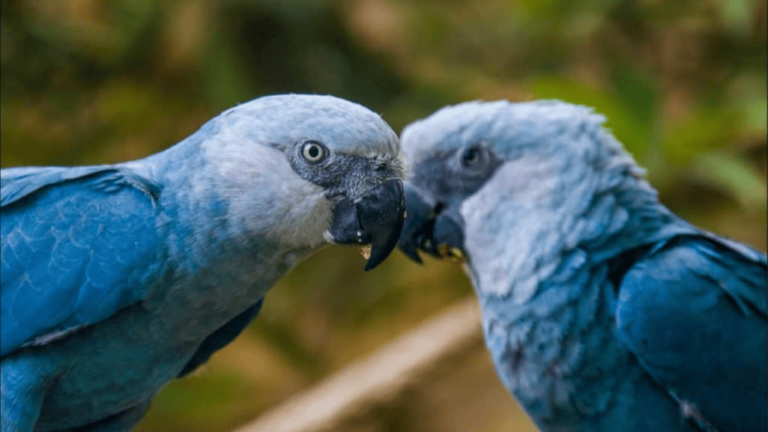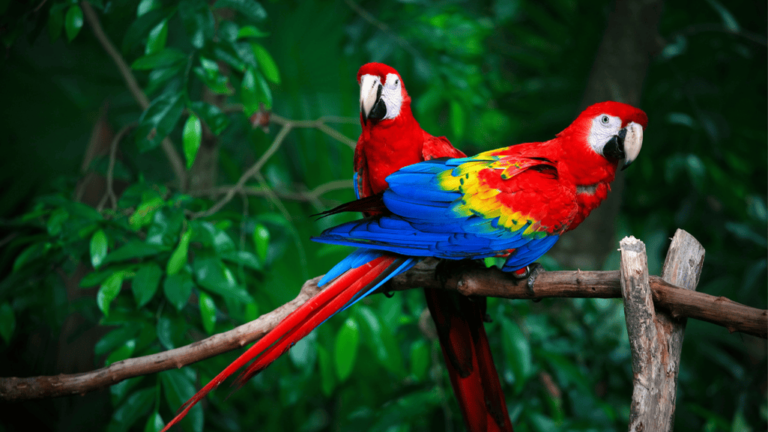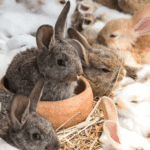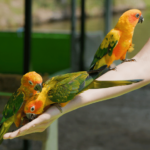If you love birds or just think a colorful parrot would be a great pet, learning about red shouldered macaw care is key. The Red Shouldered Macaw, also known as the Hahn’s macaw, is a vibrant bird that many people adore. They have beautiful green feathers and are small, making them perfect for those who want a lively bird friend.
These birds are small, about 12 inches long and 5 ounces heavy. They are great for homes with limited space. They can live for 20 to 30 years, bringing joy and energy to any home. But, they need lots of exercise, social time, and a diet rich in berries, seeds, and nuts.
Having a big enough home is important for these birds. They need a cage that’s at least 3 feet on each side. They also need good food and a place to fly around. But, they might not be the best choice for apartment living because they can be loud.
Living with a red shouldered macaw is more than just looking at their beautiful feathers. They can whistle, mimic words, and play, making them part of the family. As you learn more about caring for them, you’ll find a deep connection with your new feathered friend.
Key Takeaways
- Embrace the 20 to 30-year lifespan of red shouldered macaws by preparing for a long-term commitment.
- Ensure the right environment, with cage dimensions being a minimum of 3-feet to accommodate their active nature.
- Maintain a balanced diet, offering 1/2 to 3/4 cup of both parrot mix and fruits and vegetables respectively, daily.
- Acknowledge their inherent need for daily interaction, requiring at least two hours of playtime outside their cage.
- Consider noise levels and space before bringing a red shouldered macaw into your home, as they are not suited for all living situations.
- Plan for financial responsibility, with costs for quality care ranging from $800 to $2,000.
- Recognize the red shouldered macaw’s learning potential, which includes the ability to learn multiple phrases and show off whimsical tricks.
Discovering the Red Shouldered Macaw: An Overview
The red-shouldered macaw, known as Diopsittaca nobilis nobilis, is loved by bird lovers everywhere. They are also called the red-shouldered parrot. This bird shows the beauty of South American birds in a small package.
Unique Characteristics of Diopsittaca nobilis nobilis
The red-shouldered macaw, or Hahn’s macaw, is stunning with its green body and red shoulders. It’s small but has a big personality. They can even mimic sounds, making them great pets.
Size and Life Expectancy of the Smallest Macaw
The red-shouldered macaw is the smallest macaw, growing to 30-35 cm and weighing 165 grams. They are perfect for those with small spaces. With good care, they can live up to 30-40 years, just like bigger macaws.
Native Habitats of the Red Shouldered Macaw
Red-shouldered macaws live in many South American countries like Venezuela and Brazil. They love tropical forests, where their green feathers blend in. They also live in savannas and swamplands, showing they can adapt well.
These birds help spread seeds, which helps forests grow. They are important for their habitats’ health.
In short, the red-shouldered macaw is a symbol of South American wildlife’s beauty. As the smallest macaw, Diopsittaca nobilis nobilis brings joy and is key to the rainforest’s balance.
A Guide to the Red Shouldered Macaw Diet
The diet of the Red Shouldered Macaw is key to their health and energy, especially in captivity. Knowing what they need helps us feed them like they do in the wild.
The Red Shouldered Macaw comes from South America’s green forests. They eat seeds, fruits, and some protein. In captivity, we need to feed them in a way that meets their needs.
Nutrition Essentials: From Seeds to Pellets
For a good diet, focus on high quality parrot mix pellets. They should make up 75-80% of their food. Seeds and nuts are okay, but not too much because they can make them fat.
Pellets have the right mix of carbs, proteins, and vitamins. They are the base of their nutrition.
Incorporating Fresh Fruits and Vegetables
Fresh fruits and veggies are important for their health. They add variety to their diet and keep them active. Carrots, kale, and apples are good choices, but make sure they are clean.
It’s important to give them different foods in small amounts. This keeps their diet balanced and interesting.
Toxins to Avoid in Your Macaw’s Diet
Some foods are bad for macaws. Avocados, chocolate, and caffeine or alcohol are toxic. Always choose safe foods to keep them healthy.
Seeing a vet regularly helps make sure they get everything they need. Want to learn more about caring for your macaw? Check out books on eBay.
Understanding Red Shouldered Macaw Personality Traits
The charm of a Red Shouldered Macaw goes beyond its looks. Their lively personality traits win over avian enthusiasts. These birds show traits similar to their larger cousins, making them great pets for those who love bird intelligence and charm.
Red Shouldered Macaws love to be around people. They do well in homes where they can bond with their owners. They are smart and fun, fitting well into families if they get enough attention.
One cool thing about Red Shouldered Macaw behavior is their ability to talk. They mostly make screeches, but with training, they can say words. This can be a fun surprise for anyone who owns a bird pet.
These birds can live for 30-50 years in captivity. This means owning one is a big commitment. People thinking about getting a bird should be ready for a long time of caring for it. They need to understand the unique traits and care needs of these colorful birds.
| Feature | Detail |
|---|---|
| Size | 14 inches (approximately 35 cm) |
| Average Lifespan | 30-50 years in captivity |
| Typical Behavior | Social, intelligent, able to mimic sounds |
| Diet in Wild | Berries, nuts, fruits, insects |
| Socialization Need | High – Requires regular interaction |
| Vocal Ability | Screeches primarily, potential for mimicry |
To learn more about Macaw behavior and caring for them, check out conservation efforts and stories from experienced bird keepers. They share the joys and challenges of owning a Red Shouldered Macaw.
Creating a Comfortable Habitat for Your Macaw
To keep your pet parrot happy, you need to understand their habitat needs. Creating a space that feels like their natural home is key. This means lots of room and a setting that feels free and lush.
The Importance of Space and Environmental Enrichment
Red-shouldered macaws need lots of room to fly and play. Experts say a cage of at least 30” L x 30” W x 36” H is best. This size helps them stay active and comfortable.
It’s also important to keep their minds active. Macaws are smart and love to interact. They need things to do and places to explore to stay happy and healthy.
Choosing the Right Cage and Perch for Your Macaw
Choosing the right cage and perch is important. Macaws have strong beaks that can damage weak bars. So, the cage and perch must be sturdy and safe.
The perch should be the right size and have different textures. This helps keep their feet healthy and encourages natural behavior. It’s like giving them a variety of tree branches to play on.
Maintaining a Clean and Safe Living Area
Cleaning the cage regularly is crucial. It keeps harmful germs and mold away. This helps prevent health problems, like feather plucking.
Also, make sure your macaw gets enough UV light. Use full-spectrum lights about 12–18 inches from their perch. This helps keep them healthy and happy.
Following these guidelines helps your macaw stay healthy and happy. It also makes your bond stronger. So, having a red shouldered macaw as a pet can be very rewarding.
The Social Dynamics of Red Shouldered Macaws
Red Shouldered Macaws are known for their love of social interaction. They thrive in both their natural habitats and in homes with humans. As a bird enthusiast, I’ve seen how complex their social lives can be.
In the wild, these macaws live in small but lively groups. This shows their love for community, which keeps them safe and happy. When they move to homes, they still love to be around people. They quickly become close to their owners, always looking for attention and fun activities.
For these birds, social interaction is key to their happiness and health. Owners become more than just caregivers; they become friends. Playing and training with them keeps their minds sharp and prevents problems like loud noises or feather plucking.
If you’re thinking about getting a Red Shouldered Macaw, be ready to spend a lot of time with it. They need constant social interaction. Let’s look at how their social needs compare to other macaws, including their lifespan:
| Species | Average Lifespan | Socialization Needs | Noise Level |
|---|---|---|---|
| Red Shouldered Macaw | 30-40 years | High | Moderate to high, especially morning and sunset |
| Blue and Gold Macaw | Up to 70 years | Very high | High |
| Hyacinth Macaw | 50-60 years | Very high | High |
| Hahn’s Macaw | 30-40 years | Medium | Medium to high |
Knowing these needs helps owners give their macaws the best life. It ensures they are happy, healthy, and well-socialized in their new homes.
Grooming and Health Maintenance for Macaws
Keeping red shouldered macaws and other birds healthy involves a lot of work. These birds need regular care to stay well and live a good life. Their bright colors and lively nature make them special, but they need our help to stay healthy.
Regular Avian Veterinary Visits
Regular vet visits are key for red shouldered macaws. These visits help catch health problems early, like malnutrition and breathing issues. Vets check the bird’s weight, talk about food, and check overall health.
Addressing Feather Plucking and Self-Mutilation
Feather plucking and self-mutilation show stress or discomfort in macaws. It’s important to fix the physical issues and find out why they happen. This could be due to boredom, anxiety, or not fitting in their environment. To help, we can enrich their environment, change their diet, and even use therapy.
Recognizing Signs of Common Macaw Diseases
Spotting illness early is crucial for bird health. Signs like tiredness, messy feathers, changes in poop, or less eating mean something’s wrong. Knowing these signs helps us treat illnesses quickly.
Grooming and Health Maintenance are more than just looks. They prevent diseases and help macaws live fully. Tasks like nail and beak care, and wing clipping, are important. With the right care, these birds stay healthy and happy.
Enrichment Activities and Mental Stimulation for Red Shouldered Macaws
Red Shouldered Macaws are known for their bright colors and smart minds. They love to learn and play. Knowing how to care for them, including their diet and grooming, helps them stay happy and healthy.
Training and Behavioral Reinforcements
Training these birds helps them grow smarter and more social. It uses treats and praise to teach them. This way, they learn and bond with their owners. For more on this, check out this engaging approach to pet care.
Interactive Toys and Puzzles for Cognitive Engagement
Interactive toys and puzzles keep their minds sharp. They prevent boredom and improve their mood. Puzzle feeders that make them forage are especially fun and good for them.
The Joy of Shared Playtime and Bonding
Playing together is special for both the macaw and its owner. It’s a key part of pet care that strengthens their bond. Activities that mimic their natural behaviors are best.
It’s important to think about the macaw’s living space. Having different perches and toys encourages them to move and explore. They also like different textures, like sand or softwood, for scratching and digging.
Changing their diet can also enrich their lives. Giving them foods that are hard to get, like unshelled nuts, keeps them busy. But, always talk to a vet before making any changes to their diet.
Caring for Red Shouldered Macaws makes them happier and strengthens the bond between them and their owners. Good pet care, including the right diet, toys, and playtime, is key to owning these amazing birds.
Caring for a Red Shouldered Macaw’s Quirks and Vocalizations
Owning an exotic parrot like the Red Shouldered Macaw is a unique experience. It requires a deep understanding of pet bird care. These colorful birds add joy with their looks and sounds. They communicate their feelings and needs through various bird vocalizations.
These birds make sounds from morning to evening. It’s important to appreciate these sounds. Training them to make good sounds is key. This helps keep your home peaceful.
Despite the challenges, caring for these birds is rewarding. They can mimic human speech and need to communicate.
| Aspect of Care | Detail |
|---|---|
| Duration of Companionship | 13 years |
| Behavioral Observation | Noticed intense nesting behavior in recent years |
| Changes in Bird Community Dynamics | Relocated smaller parrots due to unpredictability |
| Research on Cognition | Parrots possess cognitive skills comparative to 5-6 years old children; insights from Dr. Irene Pepperberg. |
| Social and Vocal Mimicry | Known for mimicking human speech, indicating advanced brain structures similar to young children. |
Understanding these complexities makes your bond with your Red Shouldered Macaw better. It improves your life and theirs.
Breeding Red-shouldered Macaws: Considerations and Best Practices
Starting a red-shouldered macaw breeding program needs a deep understanding of their breeding cycles and ideal environments. These birds need special care to thrive in captivity. We’ll cover their reproduction, breeding enclosures, and the importance of ethical breeding.
Understanding the Macaw Breeding Cycle
Red-shouldered Macaws breed once a year, making each season crucial. The success of breeding depends on the pair’s compatibility. Breeders must watch these factors closely to create a stable environment.
Setting Up a Proper Breeding Environment for Red Shouldered Macaws
To breed Red-shouldered Macaws in captivity, you need a habitat that closely resembles their natural one. This includes a large cage, nesting materials, and a quiet spot. A tropical climate is also key for their health and breeding success.
Ethical Breeding and the Fight Against Illegal Pet Trade
Ethical breeding is crucial for the macaws’ welfare and species preservation. It fights against the illegal pet trade. Responsible breeders follow conservation laws and keep detailed records. They also share their breeding practices openly with buyers.
Keeping breeding practices ethical protects these birds and ensures their future. By following these guidelines, breeders can greatly help the species’ survival and health.
| Aspect | Details |
|---|---|
| Breeding Cycle | Annual, requiring compatible pairs |
| Environment Setup | Spacious cages, tropical-like climate, nesting materials |
| Conservation Practices | Adherence to wildlife conservation laws, transparent record-keeping |
Adopting a Red Shouldered Macaw: Tips for Finding a Healthy Bird
Adopting a red shouldered macaw is exciting and rewarding. But, it’s a big commitment. You need to understand the bird’s needs. Here’s how to find a healthy and social bird.
Where to Find a Red Shouldered Macaw for Sale
Look for reputable sources when searching for a red shouldered macaw. Good places include avian-specialty stores, breeders, and rescue organizations. These places offer healthy birds and support animal welfare.
Questions to Ask Breeders and Adoption Agencies
Ask breeders and agencies about their experience and the birds’ health. Ask about the birds’ diet, environment, health screenings, and any illnesses.
- How long have you been breeding or hosting red shouldered macaws?
- Can you provide details on the bird’s diet and housing conditions?
- Are there available health records and evidence of genetic testing?
- What post-adoption support do you offer to ensure a smooth transition?
Recognizing the Traits of a Well-socialized Macaw
Finding a well-socialized macaw is crucial. Look for birds that are active, engaging, and friendly. A sociable macaw will show curiosity, friendliness, and comfort around humans.
- Curiosity towards people and new objects
- Friendly behavior without signs of aggression
- Comfort in being handled or being near humans
Adopting a rescued macaw, like Julio, may need patience. Julio, who was 165 grams, took months to adjust. This shows the care needed for such birds.
Before adopting, observe the bird in different situations. This helps you see its adaptability and social level. It makes the transition smoother.
Adopting a red shouldered macaw is a big commitment. Choose reputable sources, ask the right questions, and look for a well-socialized bird. This way, you’ll have a rewarding experience with your new feathered friend.
Financial Consideration of Red Shouldered Macaw Ownership
Getting into the world of exotic birds like the Red Shouldered Macaw requires careful money management. These birds are not just beautiful and smart; they also come with a red shouldered macaw price. This price is influenced by bird care and pet care costs. The initial cost is just the start.
First, you’ll need to set up a big cage and a rich environment for your macaw. This is key for their happiness and health. You’ll also spend money on good food, vet visits, and fun toys to keep them from getting bored or destructive. The total cost shows the big commitment to their care.
Keeping your macaw happy also means ongoing expenses. Conservation efforts highlight the need for regular health checks and emergency care. These costs can add up, especially if your bird gets sick or stressed. It’s important to understand the full cost of caring for these colorful birds.
| Factor | Cost (Approx.) | Details |
|---|---|---|
| Initial Purchase | $1500 – $3000 | Varies by breeder and geographical location |
| Cage and Setup | $500 – $1000 | Durable cage, perches, toys |
| Annual Vet Visits | $200 – $400 | Check-ups and vaccines |
| Monthly Feed | $50 – $100 | Specialized pellets, fresh produce |
| Miscellaneous | $100 – $200 | Health supplements, grooming products |
Before getting a Red Shouldered Macaw, you need to plan your budget carefully. This ensures you can provide the best care without cutting corners. It’s more than just money; it’s a promise to give your bird the best life.
The charm of having a Red Shouldered Macaw around can be hard to resist. But, it’s important to be ready for the financial responsibilities. This way, you can create a happy and fulfilling life for both you and your bird.
Conclusion
The Red Shouldered Macaw brings joy to aviary enthusiasts, showing us the beauty of tropical macaws. Its bright colors and ability to adapt make it a wonderful pet. But, owning such a bird is a big responsibility.
It needs a lot of space and a special diet to stay healthy. The cost and care needed are significant. Yet, the rewards are huge, like hearing their songs and knowing you’re helping them thrive.
By choosing a Red Shouldered Macaw, you’re embracing nature’s beauty. You learn about empathy and help protect our planet. Let’s respect their heritage and work to ensure their future as pets and wild animals.



























